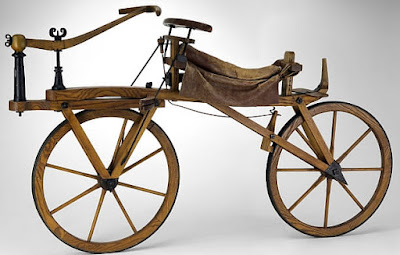Beijing has an air pollution crisis and the bike proposal is the latest in a number of environmental initiatives, such as a Chinese government-led mass tree planting. The bicycle would potentially use a technology to inhale pollution, then release the cleaned air around the rider via a system that replicates the process of photosynthesis of trees. However, as I wrote about earlier this month, bike sharing programs in China are facing significant hurdles.
So, how does the bike work? While pedaling, thanks to the reaction between the electric current, produced by the mechanical action of the pedals, and water, contained in a small tank located under the rear seat, the air passes through the filter in the front of the bike, where it is cleaned before it is delivered to the rider. When the bike is parked, the functions of air purification may continue on battery power.
China, where “smog red alerts” are frequent, has pollution-based smog that has been known to shut down factories, curtail scheduled commercial airline flights, and close highways. The smog problem in China is due to several factors, including run-of-the-mill pollution from traffic and industry. In the past several years, Chinese schools have been closed at an increasing rate, farmers have struggled because sunlight has been so severely blocked by the smog, and all kinds of health problems (from cancer to respiratory issues) have spiked -- all due to pollution. Could the Smog Free Bicycle be a contributing solution to the pollution problem? Many hope so.
From Him, Through Him, For Him (Romans 11:36),
Paul J. Staso
_______________________________________
Visit my YouTube channel -- https://www.youtube.com/user/pacetrek
Click on any of the links below to see some of my adventure photos:
- United States in 2006 (3,260 miles solo in 108 days at age 41)
- Montana in 2008 (620 miles solo in 20 days at age 43)
- Alaska in 2009 (500 miles solo in 18 days at age 44)
- Germany in 2010 (500 miles solo in 21 days at age 45)
- The Mojave Desert in 2011 (506 miles solo in 17 days at age 46)
- Various Photos From Mileposts Gone By
- Students Worldwide Who Ran With Me Virtually
- Roadside Sights From My Running Adventures
- Some Cycling Moments From The Past







